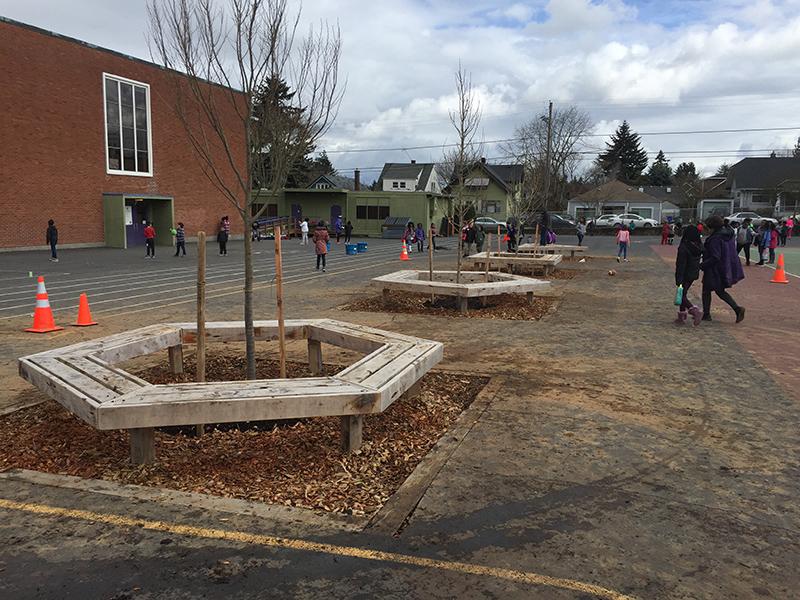Stormwater is a significant source of pollutants to the Columbia River and its tributaries. We work with schools and communities to reconfigure schoolyards, parking lots, streets, and other impermeable surfaces to allow stormwater to infiltrate into the ground, rather than running directly into our streams and rivers.
Below are several stormwater projects we are currently working on and have completed throughout the years.
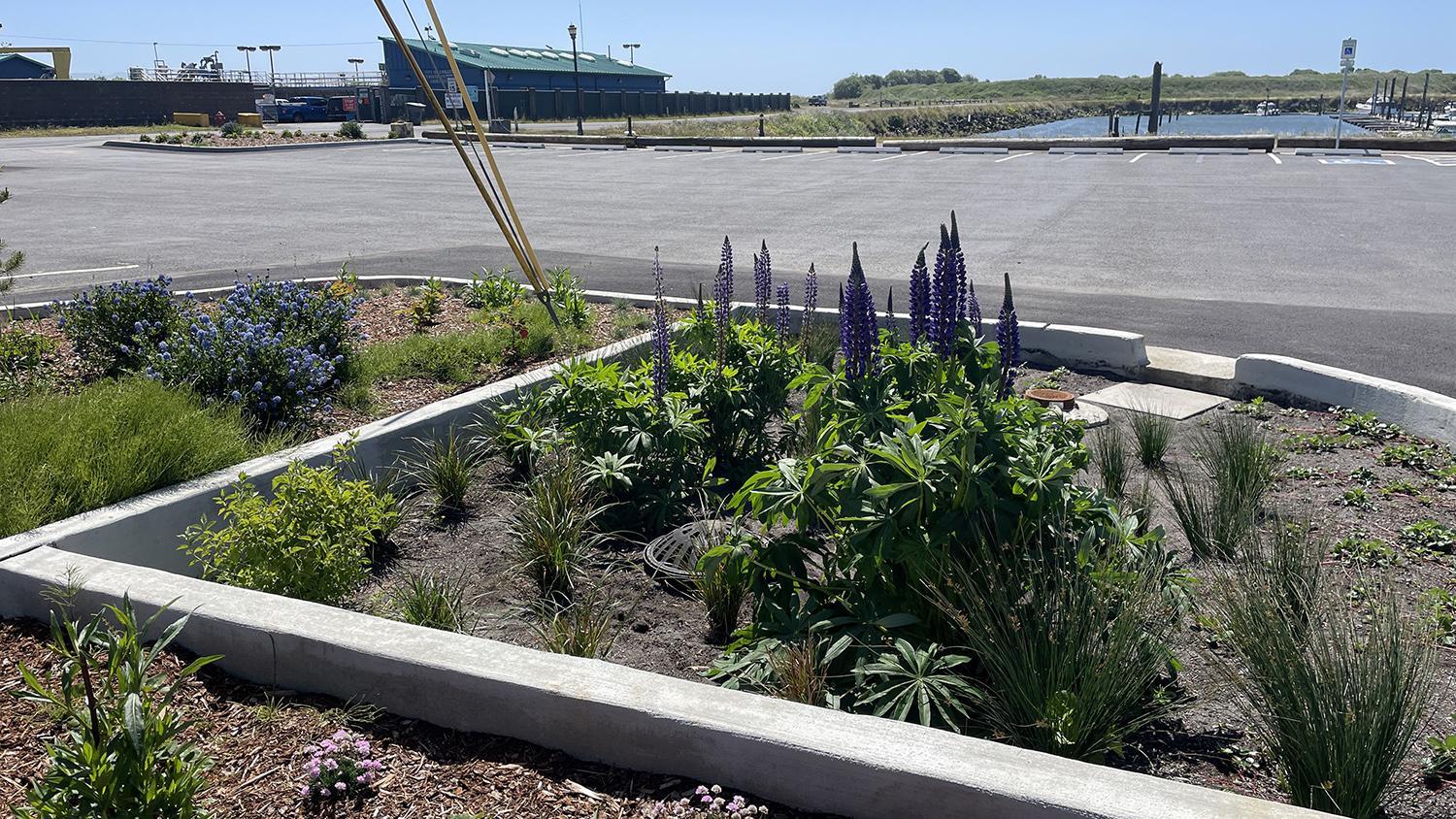
The Estuary Partnership worked alongside the City of Ilwaco and the Port of Ilwaco to enhance the water quality of Baker Bay. The project added stormwater treatment facilities along Howerton Avenue and its adjacent parking lots. The project also enhanced pedestrian connections between the Port’s parking areas, businesses on Howerton Avenue, and the Discovery Trail to provide a visually appealing streetscape that appeals to locals and welcomes area visitors. Construction concluded in June 2025.
In 2025, the Estuary Partnership joined with other partners in helping the Rigler School Commuinty realize it's RISE Schoolyard Vision plan by installing stormwater treatment facilities and more trees on their urban campus.
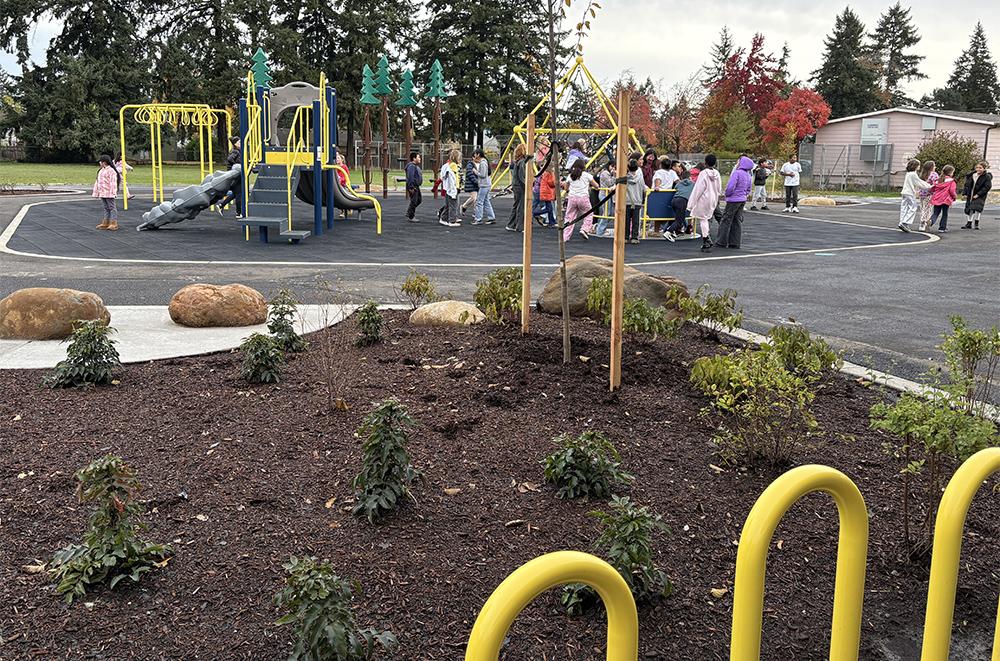
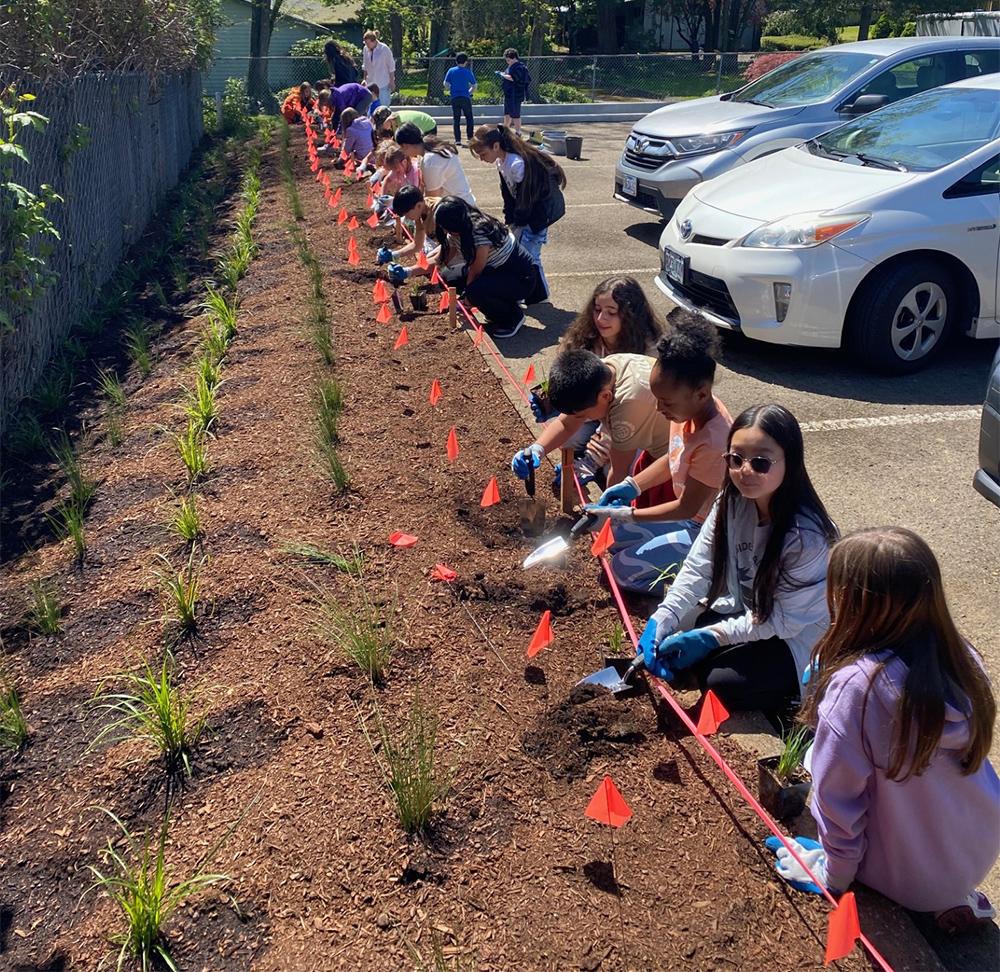
In April 2025, a project was completed to treat polluted runoff from almost 10,000 square feet of parking lot.
The Estuary Partnership collaborated with the Mittleman Jewish Community Center and the Portland Jewish Academy on a green stormwater infrastructure project to improve the water quality of Fanno Creek, reduce the heat island effect, and improve habitat for pollinators and birds.
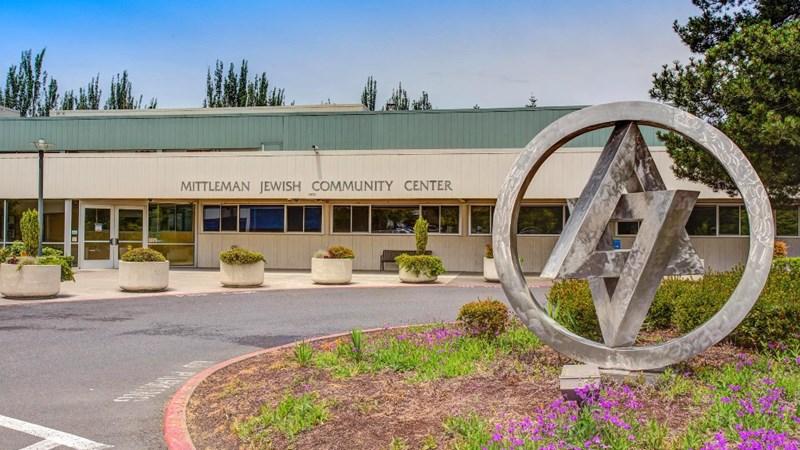
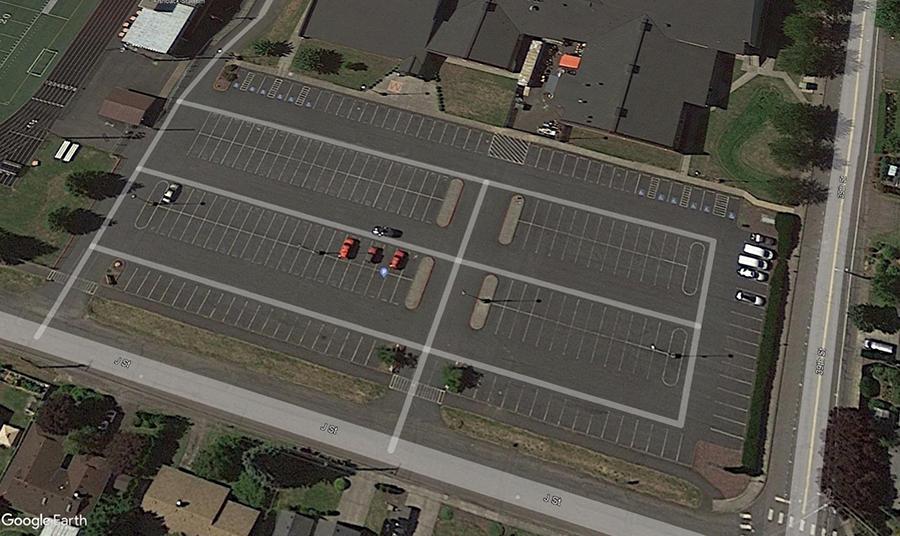
Gibbons Creek flows through Steigerwald Lake National Wildlife Refuge, where a 965-acre floodplain connection and restoration project led by the Estuary Partnership was completed in 2022. To improve water quality flowing into the refuge, we looked upstream to an important tributary of Gibbons Creek, Campen Creek, which flows through the heart of Washougal. In 2025, we are teaming up with partners to treat polluted stormwater from the Washougal High School parking lot and adjacent areas that currently flows untreated into the creek.
Grattix boxes are a simple, innovative stormwater solution to reduce zinc and copper from roof runoff. Designed by the Port of Vancouver, the Grattix box is essentially an above-ground rain garden in a box. The Estuary Partnership is providing free Grattix boxes to businesses along the Columbia River from Scappoose, Oregon to Longview, Washington, to help them meet state requirements for stormwater discharge.
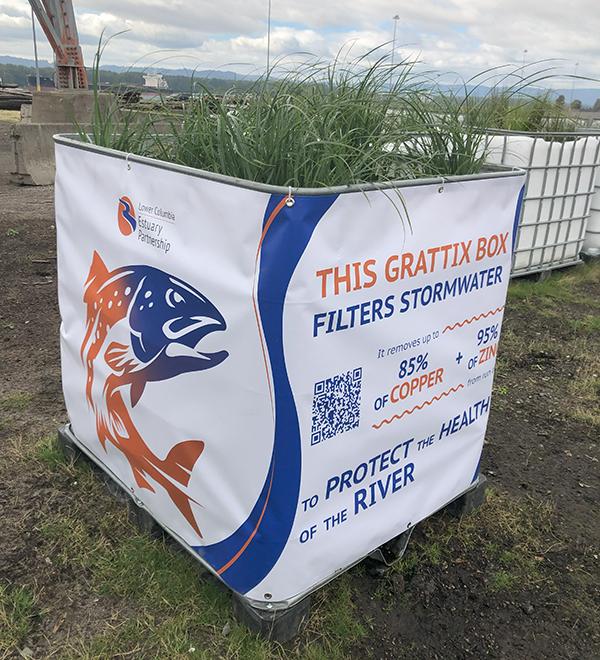
In 2023, the Estuary Partnership teamed up with the City of Rainier to complete a project that will treat polluted stormwater runoff from the city boat ramp parking lot before it flows into the Columbia River.
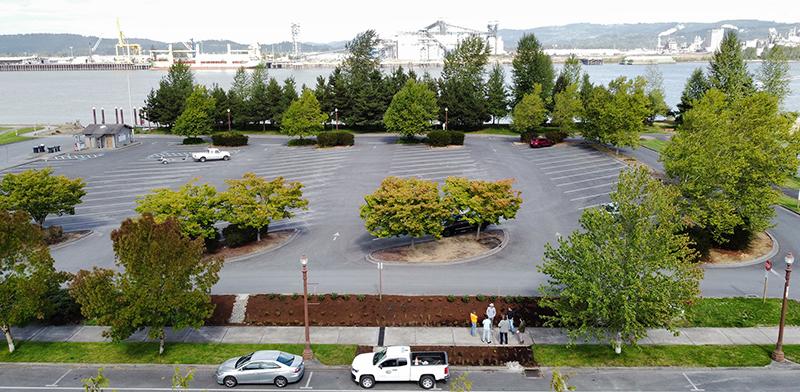
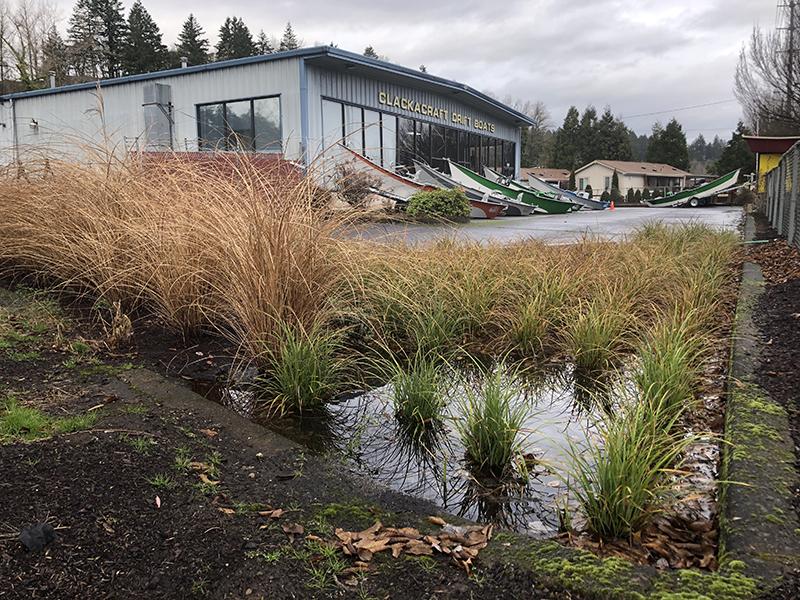
In 2020, the Estuary Partnership worked with ClackaCraft Drift Boats to add a rain garden to their parking lot to treat polluted runoff before it flows into the nearby Clackamas River.
At Sitton School in North Portland, a partnership between the Estuary Partnership, Depave, Portland Parks and Recreation, the Oregon Landscape Contractors Association, and the school community gave students a greener schoolyard.
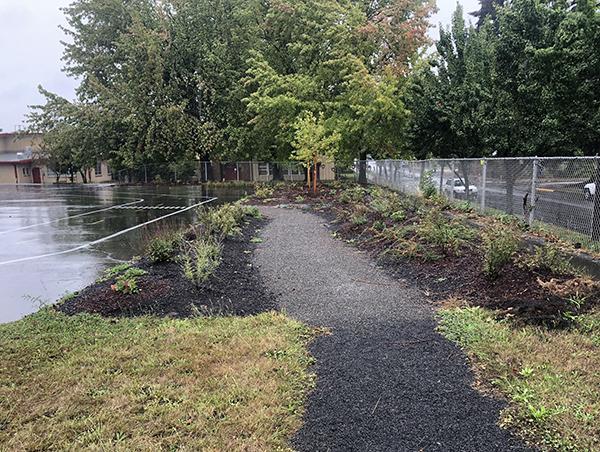
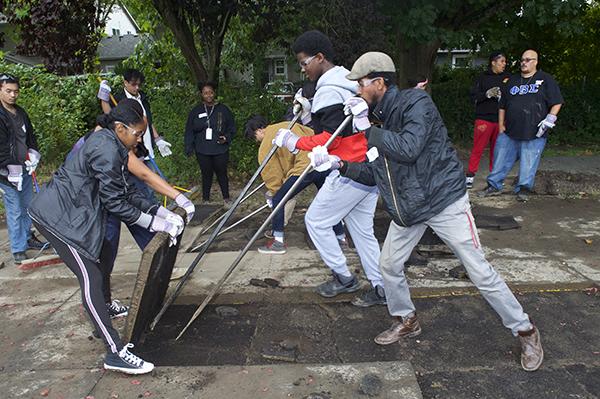
Boise-Eliot/Humboldt School in North Portland had too much asphalt and not enough grass. In 2018, the Estuary Partnership partnered with the school and Depave to remove 8,800 square feet of asphalt from their school grounds.
At Vernon School in Northeast Portland, students had limited green space and very little shade on their largely paved playground. Over two separate projects, we worked with the school community and various partners to remove asphalt, plant trees for shade, and create an outdoor classroom with rain gardens to treat runoff from the school roof.
